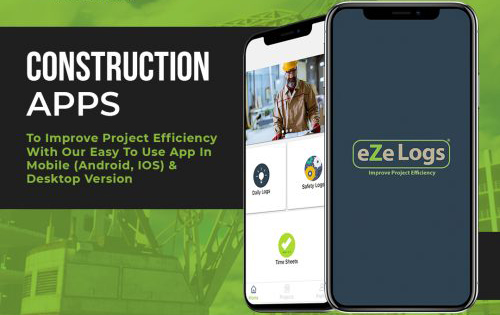Construction scheduling is a critical aspect of project management that directly impacts the success and timely completion of any construction endeavor. With numerous moving parts, including labor, materials, equipment, and subcontractors, a well-structured schedule is essential to ensure that everything aligns seamlessly.

Mastering the art of construction scheduling involves understanding its complexities, using the right tools, and implementing strategies to keep projects on track. Below are key tips to help you navigate this crucial element of construction management.
Understand the Basics of Construction Scheduling
At its core, construction scheduling is about organizing tasks in a logical sequence to ensure the efficient use of resources and time. A schedule outlines when specific tasks should start and finish, which resources are needed, and how various tasks are interdependent. Understanding these basics is the first step toward effective scheduling.
A construction schedule typically includes several key elements:
- Tasks and Activities: These are the individual steps required to complete the project, such as site preparation, foundation work, framing, and finishing.
- Dependencies: Some tasks cannot begin until others are completed. Identifying these dependencies helps prevent bottlenecks.
- Milestones: These are significant points in the project timeline, such as the completion of a building phase or the approval of a key inspection.
- Resources: This includes labor, materials, and equipment needed for each task.
- Timeframes: Each task is assigned a start and end date, which helps ensure that the project stays on schedule.
Utilize Construction Scheduling Software
One of the most effective ways to manage a construction schedule is by using specialized scheduling software. Tools like Microsoft Project, Primavera P6, and Procore are designed specifically for construction management and offer features that make scheduling more efficient and accurate.
These software tools allow you to create detailed schedules with clear timelines, assign resources to tasks, and track progress in real-time. They also offer the ability to adjust schedules as needed, which is crucial when unexpected changes occur, such as weather delays or supply chain disruptions.
Moreover, construction scheduling software often includes features like Gantt charts and critical path analysis, which provide visual representations of the project timeline and highlight tasks that are essential to keeping the project on track. By leveraging these tools, you can gain better control over the scheduling process and reduce the risk of delays.
Break Down the Project into Phases
Breaking down a construction project into manageable phases is another key strategy for effective scheduling. By dividing the project into phases, you can focus on completing one section at a time, which helps in maintaining momentum and preventing the project from becoming overwhelming.
Each phase should have its own set of tasks, resources, and deadlines. For example, you might divide a project into phases like site preparation, foundation work, structural framing, and finishing. By focusing on one phase at a time, you can ensure that each is completed before moving on to the next, reducing the risk of overlapping tasks that could cause delays.
This approach also allows for more accurate monitoring of progress and easier identification of potential issues. If a phase is falling behind schedule, it can be addressed before it impacts the overall project timeline.
Prioritize Critical Path Activities
The critical path is the sequence of tasks that determines the shortest possible duration to complete the project. Any delays in these tasks will directly affect the project’s completion date. Understanding and prioritizing critical path activities is essential for keeping your project on track.
To identify the critical path, list all the tasks required to complete the project, determine their dependencies, and calculate the longest sequence of tasks that must be completed on time for the project to finish as scheduled. Once identified, these critical tasks should be closely monitored to ensure they are progressing as planned.
By prioritizing the critical path, you can allocate resources and attention to the most important tasks, ensuring that any potential delays are addressed immediately. This proactive approach helps prevent minor issues from becoming major setbacks.
Regularly Update and Review the Schedule
A construction schedule is not a static document; it should be regularly updated and reviewed to reflect the current status of the project. Regular updates are particularly important in construction, where unexpected changes are common.
Weekly or bi-weekly reviews of the schedule can help identify any tasks that are falling behind, allowing for adjustments to be made before they impact the overall timeline. During these reviews, it’s important to communicate with all stakeholders, including subcontractors, suppliers, and clients, to ensure that everyone is aware of any changes and is on the same page.
Updating the schedule also provides an opportunity to reassess resource allocation. If certain tasks are ahead of schedule, resources may be reallocated to areas that are lagging, helping to balance the workload and keep the project moving forward.
Account for Contingencies and Buffer Time
No matter how well a schedule is planned, unexpected issues are almost inevitable in construction. Weather delays, supply chain disruptions, or unforeseen site conditions can all cause delays. To mitigate these risks, it’s essential to include contingencies and buffer time in your schedule.
Buffer time is extra time added to critical tasks or project phases to account for potential delays. This allows for flexibility and reduces the pressure to meet tight deadlines. Similarly, contingency plans should be in place to address specific risks that could impact the schedule, such as alternative suppliers or backup crews.
By planning for the unexpected, you can ensure that the project remains on track even when challenges arise. This proactive approach not only helps maintain the schedule but also reduces stress for the entire project team.
Foster Strong Communication and Collaboration
Effective communication is crucial to maintaining an accurate and up-to-date construction schedule. All stakeholders, including project managers, contractors, subcontractors, and clients, must be kept informed of the project’s progress and any changes to the schedule.
Regular meetings, whether on-site or virtual, are essential for discussing progress, addressing any issues, and making necessary adjustments to the schedule. These meetings also provide an opportunity for team members to raise concerns and suggest improvements, fostering a collaborative environment.
In addition to meetings, using communication tools that integrate with your scheduling software can streamline information sharing. For example, mobile apps that allow real-time updates from the field can help ensure that everyone has access to the latest information, reducing the likelihood of miscommunication.
Monitor Progress and Performance Metrics
To keep your construction project on track, it’s important to monitor progress and performance metrics regularly. This involves tracking key indicators such as task completion rates, labor productivity, and resource utilization.
By analyzing these metrics, you can identify trends and potential issues early on. For instance, if labor productivity is lower than expected, it may be necessary to investigate the cause, whether it’s a shortage of workers, equipment issues, or inadequate training. Addressing these issues promptly can help keep the project on schedule.
Performance metrics also provide valuable insights for future projects. By reviewing what worked well and what didn’t, you can refine your scheduling processes and improve overall efficiency in future endeavors.
Leverage Lean Construction Principles
Lean construction principles focus on maximizing value and minimizing waste throughout the construction process. By applying these principles to your scheduling process, you can enhance efficiency and reduce the likelihood of delays.
Key aspects of lean construction include continuous improvement, waste reduction, and value stream mapping. Continuous improvement involves regularly reviewing and refining your processes to eliminate inefficiencies. Waste reduction focuses on minimizing non-value-added activities, such as excessive material handling or waiting times. Value stream mapping involves analyzing the flow of materials and information to identify areas where improvements can be made.
Integrating lean principles into your construction scheduling can lead to more efficient use of resources, shorter project timelines, and ultimately, more successful project outcomes.


